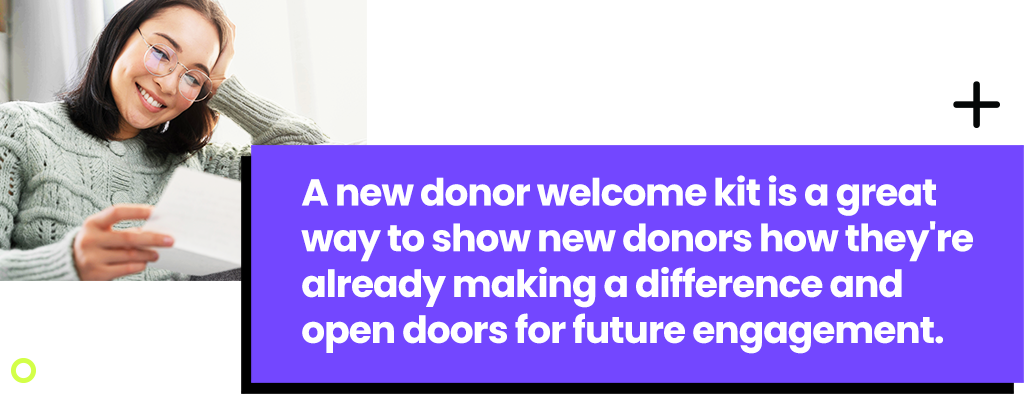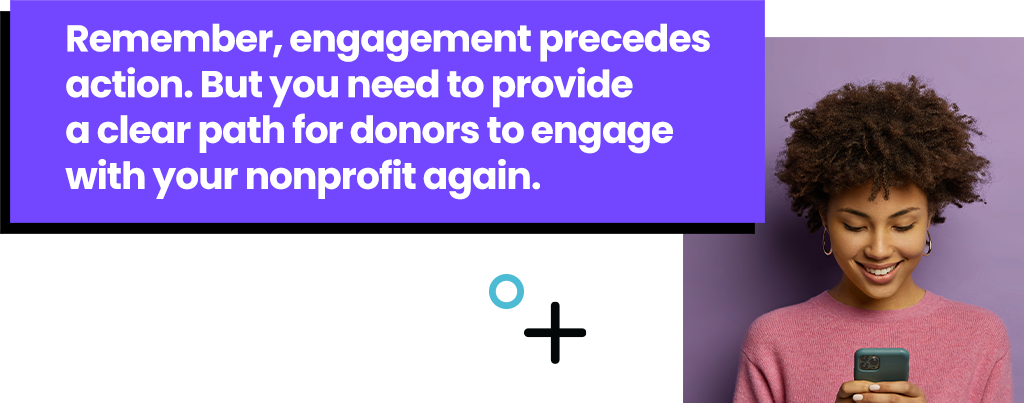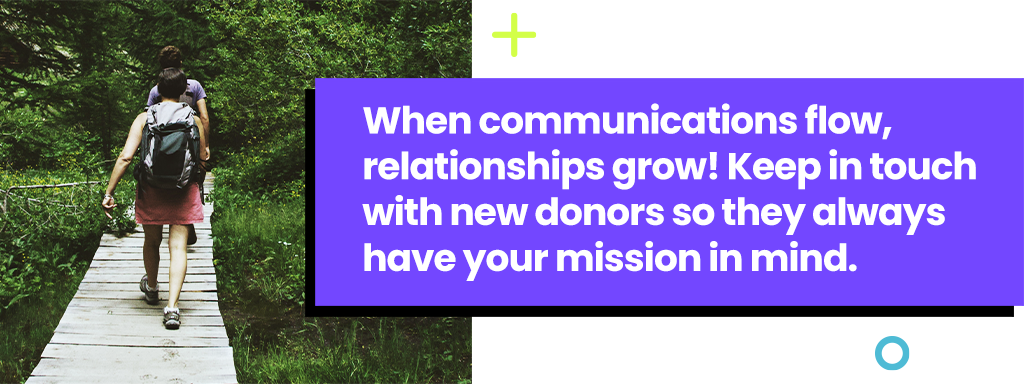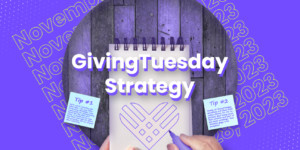When nonprofit professionals think about donor acquisition, they’re often focused on securing a first-time donation. But did you know a donor’s second gift is probably the most important one they will make to your organization? Securing a second gift from new donors is essential for long-term fundraising stability.
In fact, a donor who makes a second donation within three months of their first has a 987 percent higher average value over five years than a donor who gives once, according to data from Analytical Ones.
A second gift in a timely fashion tells you something important. It’s a clear indication that a donor believes your organization is the best way to support a cause they care about.
Securing a second gift means the donor has moved beyond impulse giving and trusts in your approach.
But getting a second donation before too much time passes is no easy task. You will need to execute these six steps quickly and effectively if you want to earn long-term support.
1. Thank donors the right way, right away!
You don’t need us to lecture you on the importance of a timely and powerful thank you after every donation.
But don’t give your donors time to wonder if you received their gift. Make sure they hear from you as soon as possible. It’s important to reach out, acknowledge a gift, and thank the donor within 48 hours.
Automated thank you emails with variable elements set the stage for a strong relationship.
Recognize donors by name and thank them for the specific dollar amount they gave. And as always, let them know how their gift made a difference and follow up in more personal ways, like phone calls and handwritten notes when possible.
But unfortunately, many nonprofits step off the gas after that initial acknowledgment!
READ MORE: Can your nonprofit send better thank you’s?

2. Welcome new donors into your family.
After someone donates, the feeling they made a difference will stay with them for a few days. A new donor welcome kit can extend that sensation for weeks, which is crucial for securing a second gift!
A new donor welcome kit should thank donors again for their contribution with a conversational letter that welcomes them into your family.
Include a brochure or newsletter to teach them a little more about your organization and the impact donors have on your goals. You can also use promotional items to help them feel closer to your organization. Branded refrigerator magnets, hats, and bumper stickers are universal and always an option in donor welcome kits.
But if your organization can feature an item that ties in directly with your mission, that’s even better!
Opening and going through your welcome kit should be an exciting experience for your donors.
It shows them you really care about your mission as much as they do. It’s an expression of how much you value each donor and their efforts to make your work possible.
Your welcome kit may not be the best place for another hard ask. But you should let donors know there are always opportunities to support your cause. A more subtle ask in your welcome kit should focus on the donor and their impact on your organization.
Consider saying something like, “Call or email us to learn more about ways you can further your impact.”
At this point in the relationship, you want to focus more on opening lines of communication than pushing for a second gift.
3. Ask for feedback.
Want to let your donors know that you actually care about them as an individual? Tell them you want to hear what they have to say!
Send a brief survey asking your new donors a few short questions.
Find out what’s important to them and why they chose to support your organization. Ask them if there is anything they think you can do better.
A new donor survey isn’t just a helpful stewardship tool. It also helps you learn a bit about your new donors. Use what you learn in future communications to show them you are listening while giving each donor a more personal experience.
READ MORE: Why aren’t you using donor surveys?

4. Open doors for future engagement.
This strategy is especially powerful for organizations that depend on volunteers to see their mission through. Let your new donors know they can help put their donation into action at your next volunteer opportunity.
Time is money. So, you’re off to a great start if a donor is excited enough about your goals to further the cause in their free time!
A new donor volunteering their time has the same implication.
Pay special attention to gifts that are larger than your average first-time gift. Show these donors how appreciative you are and encourage further support by inviting them to your next big event. Or ask if they would be interested in assisting in peer-to-peer fundraising initiatives.
READ MORE: Why are you struggling to retain donors?

5. Keep in touch.
After you’ve completed the initial steps, don’t let communications fall off!
Have you asked your donors if they want to receive your regular eNewsletter? Reach out and encourage them to sign up! This provides a constant reminder of how donors are making an impact, right in their inbox!
If your nonprofit is active on social media, ask your new donors to follow you online. Like your eNewsletter, it gives them a casual way to engage with you, keep up on your activities, and see the impact of your work.
You could also send donors a copy of your annual report.
This is especially powerful if a donor has already shown a deeper interest in your organization but has yet to commit to a second donation. Showing them how every dollar works to further your goal might be enough to secure a second gift.
6. You have to ask!
We know nonprofits often worry about fatiguing their donors by asking for too many gifts in succession.
However, if you’ve really put care and attention into your new donor outreach so far, another well-timed and impactful ask won’t feel abrasive.
At this point, they’ve only known you for a short time. But donors should already feel a connection to your organization, its mission, and the difference they’ve helped make.
They might be eager to do more right away!
Many nonprofits are confused about this issue. The problem isn’t that you’re asking again too quickly.
What really turns donors off is when nonprofits send appeal after appeal without varying the type of communications a donor receives in between. Every touch point shouldn’t contain an ask, but that doesn’t mean you should avoid asking all together!
For example, you can encourage new donors to enroll in your monthly giving program. Let them know how monthly gifts help sustain your initiatives and progress (not your finances!) throughout the year.
READ MORE: Are you ready to launch a monthly giving program?
Why is securing a second gift so important?
You can’t wait too long to put the advice above into action when you receive a first-time gift from a new supporter.
After all, a donor’s average long-term value falls as time goes by between their first and second gift.
According to the Analytical Ones data referenced earlier, a donor who makes a second donation within three months is 58.4 percent more valuable over five years than a donor who gives for the second time between 10 and 12 months after their initial donation.
There are some different theories on this.
But it seems logical the donors who are most excited, feel more connected to your organization, and really want to do the most they can to further your goals are more likely to give again and make a bigger impact.
However, even the most enthusiastic donors won’t support an organization that doesn’t value their gift! After all, you’re not the only nonprofit supporting the cause they care about. The bottom line is that if you are not up to the task of engaging them personally, they will find an organization that is!
If you want to secure a second gift, build relationships, and earn long-term support from more of your first-time donors, you need a second gift strategy that matches a donor’s enthusiasm for the cause.









